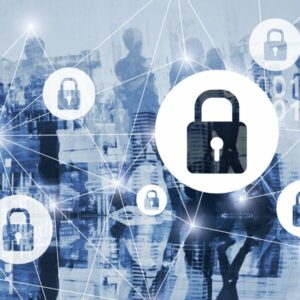As technology evolves, so too does the cybersecurity landscape. Boards and councils play a crucial role in overseeing and managing cybersecurity risks within their organisations. Few events can undermine the trust of customers, investors and regulators more than a data breach.
Staying ahead of emerging trends is essential to proactively safeguard sensitive data, maintain public trust, and ensure operational continuity. In this blog, we explore key cybersecurity trends that decision-makers should monitor closely.
4 emerging cybersecurity trends:
1. Artificial Intelligence (AI) in cybersecurity

AI has achieved significant technological breakthroughs, drastically changing the cybersecurity threat landscape.
This has resulted in growth of defence tools that leverage both AI and machine learning (ML) due to their dynamic and adaptive capabilities. AI can analyse vast amounts of data in real-time, identify patterns, and predict potential attacks before they occur.
For boards and councils, AI offers both opportunities and challenges. It can enhance defence mechanisms, streamlining cybersecurity efforts by automating routine tasks, allowing cybersecurity teams to focus on strategic issues. However, leaders should also take into consideration ethical concerns around data privacy and potential misuse of AI tools.
2. Ransomware-as-a-Service (RaaS) and the evolution of cybercrime

Ransomware has evolved from isolated incidents to a highly organised industry, with cybercriminals offering Ransomware-as-a-service (RaaS). Ransomware remains a common cyberthreat, involved in 20% of all cybercrime incidents (IBM X-Force Threat Intelligence Index 2024).
This is only predicted to increase as the RaaS model allows individuals with little technical knowledge to deploy ransomware attacks for a fee. This is a threat for boards and councils, as it lowers the barrier to entry for cybercriminals and increases both the frequency and severity of ransomware attacks.
It’s important to ensure your organisations have comprehensive incident response plans and regularly update their cybersecurity defences to mitigate this growing risk.
3. Zero trust security models

A significant trend to watch for is the adoption of Zero Trust Architecture (ZTA).
Unlike traditional security models that rely on perimeter defences, Zero Trust assumes that threats can come
from both outside and within the network.
This paradigm shift follows the principle of ‘never trust, always verify’ and requires continuous
verification of users and devices.
Key components of ZTA include:
Micro-segmentation: Network is divided into smaller segments or zones and gives each segment separate access
Least privilege access: users are granted only the level of access necessary to perform their job functions
Continuous monitoring: constantly monitoring traffic and user behaviour to detect anomalies, logins and connections time out periodically forcing users to be continuously re-verified
As organisations are operating in increasingly digital, remote and interconnected environment, Zero trust models:
- Protect sensitive information
- Mitigate risks of remote work
- Reduce insider threats
- Supports compliance and governance
Adopting a Zero Trust Model signals a commitment to robust data protection and proactive risk management, which aligns with the board’s responsibilities in oversight, governance, and strategic decision-making.
4. The evolution of phishing attacks
 Phishing tactics have grown increasingly sophisticated, often bypassing traditional security measures and targeting high-level individuals, including board members and councillors, with advanced social engineering techniques.
Phishing tactics have grown increasingly sophisticated, often bypassing traditional security measures and targeting high-level individuals, including board members and councillors, with advanced social engineering techniques.
Attackers now target high-ranking individuals, such as executives and board members in a practice called ‘whaling’. Whaling attacks are far more sophisticated because of the high value of the targets.
Read more about whaling and some examples here.
Cybercriminals are using AI and deepfake technology to craft hyper-realistic emails, messages, and even audio or video recordings. And attacks are tailored using information found on social media and other public channels to add credibility to their messages.
To protect themselves, board members and councillors should be using robust authentication systems. Two-factor authentication requires users to submit two or more verification factors to gain access, making it much harder for attackers to obtain unauthorised access, even if they have manipulated a user into revealing one set of credentials.
Stellar’s two-factor authentication feature provides a vital layer of security, safeguarding directors’ and councillors confidential information and enhancing overall cyber resilience for board governance. Get in touch for all the details about how Stellar can protect your organisation here.
Final words on emerging cybersecurity trends
In a time where cyber threats are rapidly evolving, staying informed on cybersecurity trends is essential for effective governance and risk management. From leveraging AI for enhanced protection to adopting Zero Trust models and preparing for the rising threat of RaaS, proactive security measures are critical. Understanding these trends is key to enable board members and councillors to make informed decisions, safeguard sensitive data and uphold public trust.
By implementing robust strategies like two-factor authentication and advanced threat detection, boards and councils can strengthen their organisations’ cyber resilience, securing a safer digital future for all stakeholders.
